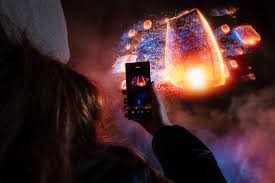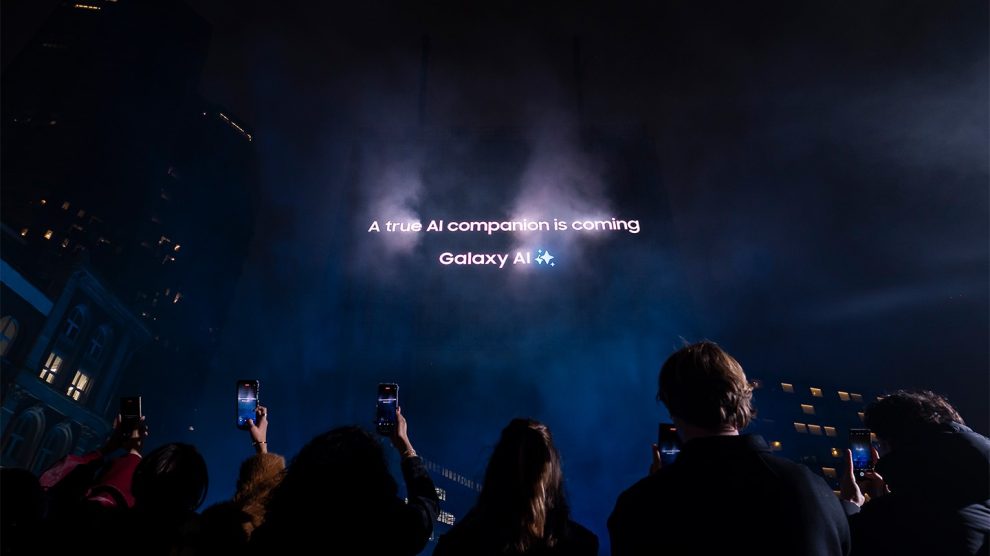In a move that underlines its reputation as a leader in mobile innovation, Samsung has teased a revolutionary development in how users interact with mobile devices. With Galaxy Unpacked 2025 just around the corner, the company has hinted at a holographic experience that could redefine what smartphones are capable of. While details remain sparse, the implications of such a feature are vast, promising to set a new benchmark for the mobile industry.

Samsung’s teaser showcases its commitment to pushing boundaries. The potential of a holographic experience is particularly intriguing, suggesting a shift from conventional touchscreen interfaces to something more dynamic and immersive. This announcement raises questions about how the technology will work, what it will bring to users, and how it could change everyday interactions with mobile devices.
The concept of holographic interaction is not entirely new. For years, the technology industry has explored ways to integrate holography into consumer devices. However, challenges such as high costs, technical limitations, and the need for specialized hardware have hindered widespread adoption. Samsung’s ability to integrate this feature into its upcoming devices could signify a breakthrough, making the technology accessible to a broader audience.
To understand the significance of Samsung’s announcement, it is helpful to consider the evolution of smartphone interaction. From the introduction of multi-touch screens to the incorporation of voice assistants, each advancement has brought users closer to a more intuitive and natural way of using their devices. Holography represents the next logical step, offering a way to interact with digital content in three dimensions.
One of the most exciting aspects of this technology is its potential applications. In entertainment, for example, holographic experiences could transform the way you watch videos or play games. Imagine a movie scene projected in 3D, allowing you to view it from different angles or even interact with it. In gaming, holography could take immersion to a new level, with characters and environments appearing as though they exist in the physical world.
The implications extend beyond entertainment. In productivity, holography could make multitasking more efficient. You might have multiple screens floating in space, allowing you to manage tasks without being constrained by the size of a physical display. In education and training, holography could offer interactive learning experiences, such as dissecting a virtual frog or exploring historical landmarks in three dimensions.
Samsung’s teaser also hints at potential applications in communication. Holography could enable more lifelike video calls, where participants appear as 3D projections rather than flat images on a screen. This feature would bring a sense of presence and connection, especially in long-distance communication.
The table below outlines potential applications of holographic technology in Samsung’s upcoming devices:
| Application Area | Potential Use Cases |
|---|---|
| Entertainment | 3D movie viewing, immersive gaming, augmented reality experiences |
| Productivity | Multi-window interfaces, virtual desktops, enhanced collaboration tools |
| Education | Interactive simulations, virtual field trips, 3D models for hands-on learning |
| Communication | Holographic video calls, enhanced conferencing, real-time virtual presence |
| Healthcare | Virtual consultations, 3D medical imaging, augmented surgical training |
While the possibilities are exciting, the success of this technology will depend on several factors. First, it must be intuitive and easy to use. The novelty of holography will wear off quickly if it complicates basic tasks. Samsung must ensure that the feature enhances usability rather than detracting from it.
Second, hardware requirements will play a significant role. Holography typically demands advanced components, such as high-resolution projectors and sensors. Samsung’s ability to integrate these elements into sleek, lightweight devices will be critical to its success. Moreover, the company will need to address power consumption, as holography is likely to be resource-intensive.
Third, content availability will be key. A holographic interface is only as good as the experiences it offers. Samsung will need to collaborate with developers, content creators, and third-party platforms to ensure a rich ecosystem of holographic apps and features. Without compelling content, the feature risks being dismissed as a gimmick.
Pricing is another crucial consideration. Holographic technology has traditionally been expensive, and affordability will determine whether it reaches a mass audience. Samsung’s track record of delivering premium features at competitive prices suggests it is well-positioned to address this challenge.
From a broader perspective, Samsung’s move reflects its ongoing efforts to lead the industry in innovation. The company has consistently pushed the envelope, from introducing foldable phones to pioneering advancements in camera technology. The holographic experience teased for Galaxy Unpacked 2025 continues this tradition, signaling that Samsung remains committed to staying ahead of the curve.
However, the introduction of such a feature is not without risks. If the technology fails to meet user expectations, it could face backlash and skepticism. Holography is often associated with futuristic concepts, and any shortcomings could tarnish the perception of Samsung’s brand. To mitigate this risk, the company must manage expectations carefully and ensure that the feature is polished and functional at launch.
The timing of this announcement is also worth noting. The smartphone market is becoming increasingly competitive, with manufacturers vying for attention through unique features and innovations. By teasing a groundbreaking technology, Samsung has effectively captured the spotlight, generating anticipation and buzz ahead of Galaxy Unpacked 2025.
For you, as a potential user, the prospect of holographic interaction represents an exciting opportunity to experience technology in a new way. Whether you’re a casual user or a tech enthusiast, the potential applications of this feature are likely to enhance how you interact with your device. However, as with any emerging technology, it is essential to approach it with a balanced perspective, considering both its promises and its limitations.
As the countdown to Galaxy Unpacked 2025 continues, all eyes will be on Samsung to deliver on its promise of a new way to interact with mobile devices. If successful, this development could mark a turning point in the industry, setting a new standard for what smartphones can achieve. Whether you’re intrigued by the potential applications or skeptical of the hype, one thing is clear: Samsung’s holographic experience is poised to be one of the most talked-about innovations of the year.










Add Comment